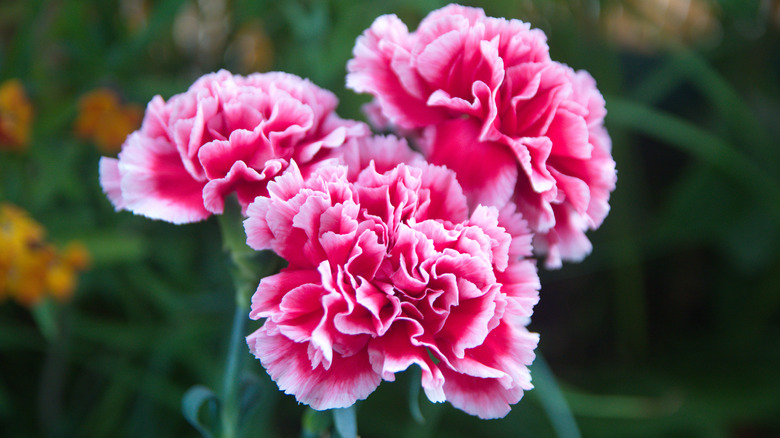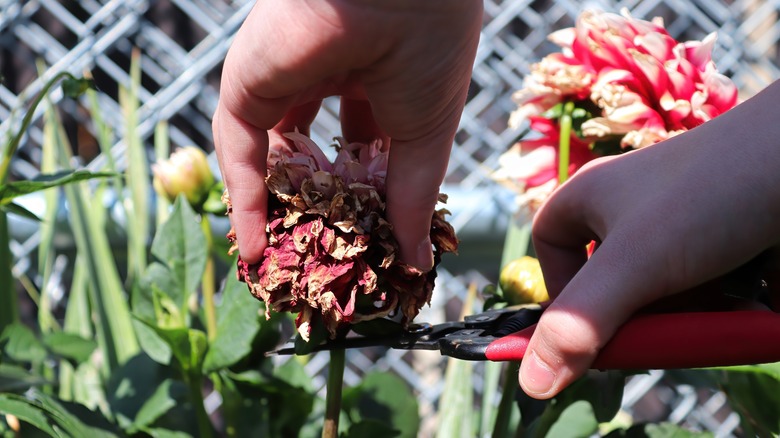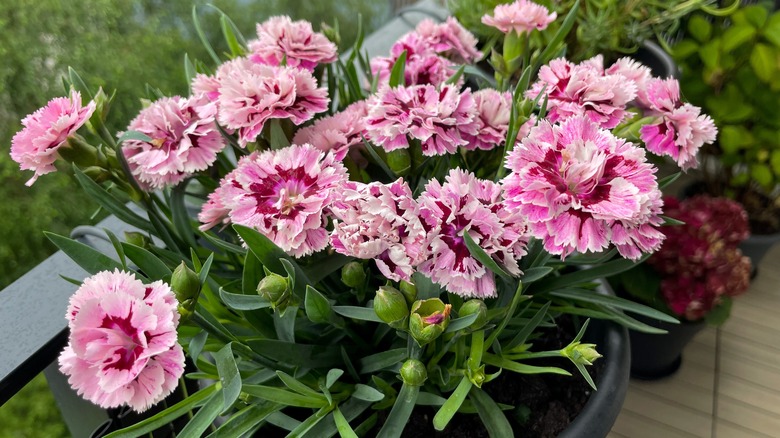How To Deadhead Carnations After They Bloom
If you want your carnations to rebloom before the season ends, you need to make deadheading a part of your gardening routine. Deadheading is the process of cutting off spent blooms, which encourages them to regrow. Spent blooms are flowers that are in the process of dying, and they are often brown or wilted. You want to snip them off at the first sign of wilting, rather than waiting until they're fully shriveled.
In order to properly deadhead carnations, you first need to grab clean, sterile cutting shears. You want to make sure they're sterilized with rubbing alcohol beforehand to ensure you don't accidentally spread fungus or disease from a previous plant. You also want to ensure the blades are sharp so as not to accidentally harm the plant with blunt scissors.
If you're still in the flowering season, cut the carnation at the node, which is between the flower head and the first leaf. There will most likely be new buds growing a few inches below the bloom. Cut the spent bloom so that there are a few inches of stem above the new buds. This will encourage new flowers to grow.
Why deadheading is important
Deadheading flowers helps them regrow as you are allowing the plant to send its energy into producing newer shoots. By removing the spent flower, the plant no longer has to send resources to that part of the stalk. Instead, it can focus all its energy on making new buds.
Deadheading is like rewiring the system of the plant. Usually, when a bloom is spent, the flower goes into the next cycle of its life, seed production, and the plant focuses all of its energy on making those seeds. But if you snip the wilting bloom off before it seeds, the plant will mark it missing, and pour all of its resources into root and vegetation development. That includes growing blooms!
When it comes to deadheading carnations, you will need to cut them back just twice a year. The first time will be in the summer when you first notice your flowers wilting. The second time will be in the fall, when it's time to make them dormant for winter. However, spent flowers can be left on throughout the fall and winter, as the dried stems and seed pods are a great source of food and habitat for wildlife.
How long can you deadhead carnations?
While carnations are perennials, they're short-lived and typically stick around for only two to three years, and afterwards will need to be replaced. But instead of going to the nursery or home improvement store to buy new carnations, you can propagate them yourself before they get fully spent. Carnations grow very well from cuttings, so they have a high chance of rooting and forming new bushes of carnations.
To propagate them, use a pair of sanitized shears to cut a stalk that is not budding or bloomed. Cut the flower right below the leaf node, aiming to make it 4 inches tall. Dip in root hormone, and plant it in a small container filled with coarse sand. Place a plastic bag over the stem, put it in a sunny spot, and water it weekly. You can transplant the carnation into the ground once its roots are established.


